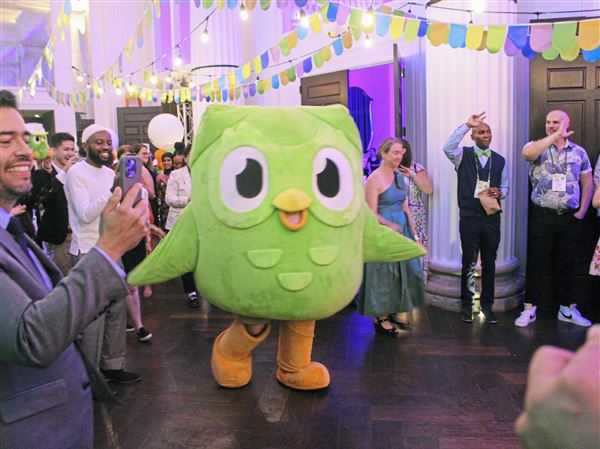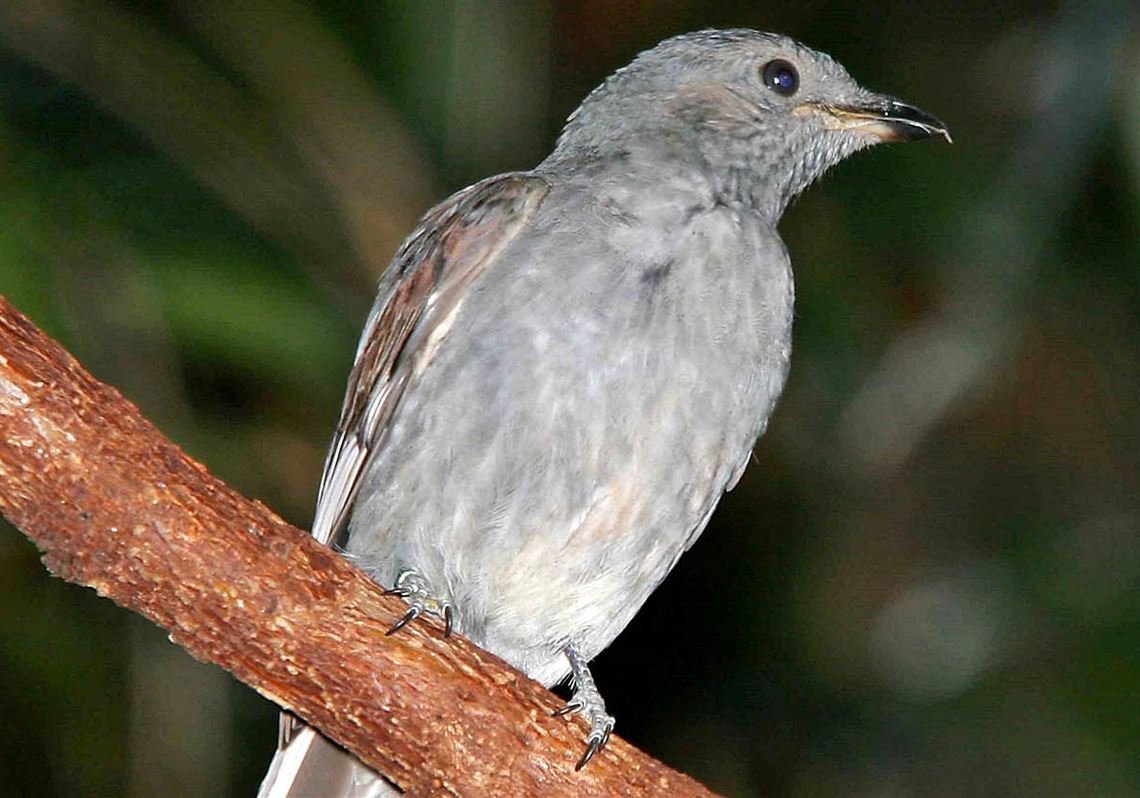This is one of a series presented by the National Aviary, which works to inspire respect for nature through an appreciation of birds.
Arguably, they are the quintessential tropical birds. Members of the avian family Cotingidae all live in humid rain forests throughout Central and South America. Unlike some other tropical bird families, such as the tanagers, which have species here in the U.S., the contingid lineage does not have any temperate zone relatives in North America.
Among the 70-odd contingid species are some of the most colorful, vocal and bizarrely ornamented birds in the world. They can be as small as a chickadee or as large as a crow. They also have many color variations, from pure white, to deep crimson, to brilliant turquoise, to emerald green, to bright orange. Only about a third of the species in the family actually go by the common name of cotinga; others are called plantcutter, berryeater, fruiteater, purpletuft, fruitcrow, bellbird, umbrellabird and cock-of-the-rock.
Three continga species can be seen at the National Aviary. The screaming piha is the one that is much more often heard than seen. It has by far the loudest voice of the three — a piercing “pi-Pi-Yah!” easily heard from inside and outside the Aviary. It is so loud that people who hear it may be surprised to learn that it is uttered by a bird no bigger than a robin. The call has a startling wild quality that makes it a favorite for the sound tracks of jungle movies. It may have the loudest call, but the screaming piha has the least colorful plumage of the three, both the male and female being uniformly mouse gray.
The slightly smaller, electric blue male spangled cotinga, with his dark fuschia-colored throat, is visually stunning, although his mate is plain mouse gray like the piha. The male gives display flights in the treetops, and when he sings he erects his crown and back feathers and fans his tail. Like other cotingas, spangled cotingas feed on small fruits, picking them from hanging clusters on the wing.
The purple-throated fruitcrow is the largest of the three cotingas mentioned, about the size of a dove. Both the male and female are mostly black, however the male has bright purple-red throat feathers, resembling the iridescent gorget of a hummingbird. When displaying for his mate, he spreads his throat feathers while repeatedly uttering soft “Oooo-waa” calls. Fruitcrows have long broad wings and can fly slowly and easily — they use their aerial maneuverability to pluck insects and fruits from the leaves and branches of tropical trees. Because they eat so many fruits and later regurgitate the indigestible pulp and seeds, all cotingas are ecologically important seed dispersers in the tropical forest ecosystem.
So, the next time you visit the National Aviary — maybe even for our upcoming Night in the Tropics fundraiser on Saturday July 9th (https://www.showclix.com/event/NightInTheTropics) — be sure to keep and an ear our for cotingas, the most tropical birds of all.
First Published: July 6, 2016, 4:00 a.m.















